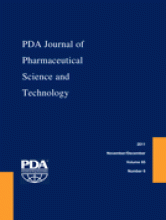Abstract
CONFERENCE PROCEEDING Proceedings of the PDA/FDA Adventitious Viruses in Biologics: Detection and Mitigation Strategies Workshop in Bethesda, MD, USA; December 1–3, 2010
Guest Editors: Arifa Khan (Bethesda, MD), Patricia Hughes (Bethesda, MD) and Michael Wiebe (San Francisco, CA)
Abstract
Detection and identification of pathogens in any given sample without any knowledge about the pathogen requires the combination of sample purification and generic signal amplification. Our universal virus-detection assay combines virus capsid purification with a generic polymerase chain reaction (PCR) optimized for virus-sized genomes. As a general strategy, biochemical and physical purification by targeted digestion of contaminating host nucleic acids precedes nucleic acid extraction. RNA is transcribed into cDNA; cDNA and the DNA are then used as templates for degenerate oligonucleotide primer PCR (DOP-PCR). This PCR uses a pool of related but different primers, combining degenerate and specific annealing conditions. PCR products can be identified by cloning and sequencing, by microarray, or by high-throughput sequencing.
We detected enveloped and non-enveloped DNA and RNA viruses by DOP-PCR in cell culture as well as in clinical samples. The assay has the ability to detect single- and double-stranded genomes, circular genomes, segmented genomes, and linear genomes. Both, large virus genomes such as herpesvirus and very small virus genomes (e.g., circovirus) can be sensitively detected in the same assay. The DOP-PCR assay can be used to identify viruses either directly from biological specimens or from cell culture. A strong feature of the DOP-PCR is its ability to amplify viral sequences without prior knowledge of those sequences, increasing the likelihood of finding mutated or novel viruses. In combination with high-throughput sequencing, the DOP-PCR is a very sensitive tool that can potentially be used for the characterization of a given sample.
- © PDA, Inc. 2011
PDA members receive access to all articles published in the current year and previous volume year. Institutional subscribers received access to all content. Log in below to receive access to this article if you are either of these.
If you are neither or you are a PDA member trying to access an article outside of your membership license, then you must purchase access to this article (below). If you do not have a username or password for JPST, you will be required to create an account prior to purchasing.
Full issue PDFs are for PDA members only.
Note to pda.org users
The PDA and PDA bookstore websites (www.pda.org and www.pda.org/bookstore) are separate websites from the PDA JPST website. When you first join PDA, your initial UserID and Password are sent to HighWirePress to create your PDA JPST account. Subsequent UserrID and Password changes required at the PDA websites will not pass on to PDA JPST and vice versa. If you forget your PDA JPST UserID and/or Password, you can request help to retrieve UserID and reset Password below.






